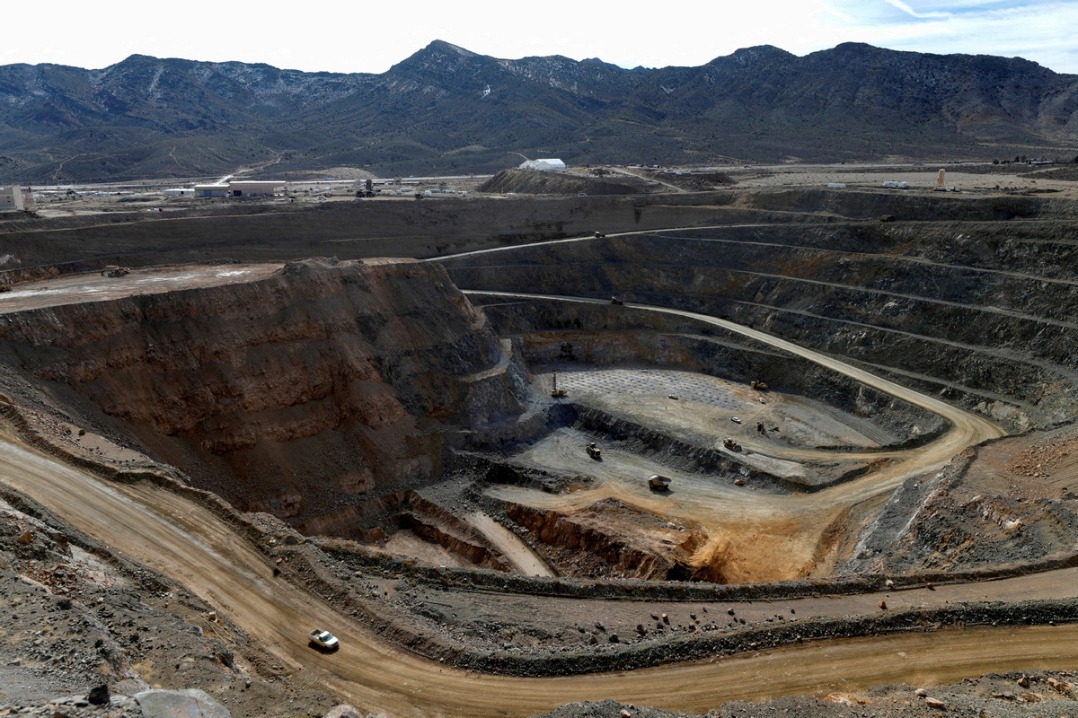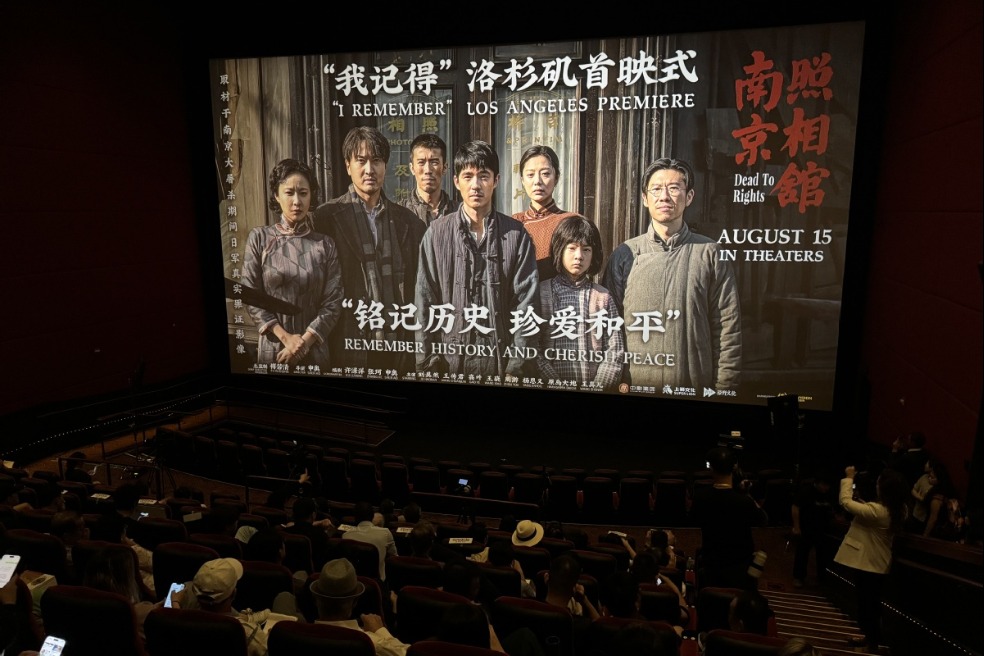How US ban fed China's AI boom

At last month's World Artificial Intelligence Conference in Shanghai, Huawei showcased its new artificial intelligence, or AI, computing system, called the CloudMatrix 384.
The new super-node architecture system combines 384 of the company's Ascend 910C chips. And this cluster approach appears to rival the performance of Nvidia's most advanced chips.
This was big news.
Just one year ago, Nvidia had an unchallenged global monopoly in the high-end GPUs required for Generative AI. This was why Nvidia's market capitalization surged from $1 trillion to $4 trillion from 2023-25, making it the world's most valuable company.
US-based Nvidia was the leader in the most important foundational technology of our time. And it had a natural monopoly in its space, by virtue of its ecosystem, network effects and economies of scale.
And then the US government did what the markets could not. It broke Nvidia's monopoly.
By banning Nvidia sales of A100s and H100s to China, the US government created an opening. This meant $10 billion in unmet demand. The recent ban of the scaled-down H20 in April 2025 alone created a $5.5 billion loss for Nvidia.
Huawei and others have been racing to fill this gap. And Huawei's new Ascend 910C, in its CloudMatrix configuration, is the leading contender.
In response, the US government has reversed its ban on H20 sales to China — mostly at the urging of Nvidia CEO Jensen Huang, who repeatedly pointed out that half of the world's AI researchers are in China, and that restricting Nvidia's sales could strengthen domestic competitors, potentially eroding Nvidia's software advantage, especially CUDA.
But it is too late. The monopoly has been broken.
In fact, it was too late back in 2019.
Independent growth
In July 2019, I was at the Huawei headquarters in Shenzhen. I advise international businesses on accelerating their online growth, so I spend a lot of time visiting and studying China's digital leaders.
The Huawei event I was at was about its financial results. But this was just three months after the entity list ban imposed by the US government. So, that was the big topic and I ended up sitting behind Chairman of the Board Liang Hua, the guy everyone was waiting to hear from.
Liang described their situation as analogous to a plane being hit by anti-aircraft fire. They were riddled with bullets. And two rounds had hit the engine. But they were still flying.
As he was talking, there was a picture of a shot-up World War II bomber behind him. The bullet hits he was describing were the loss of thousands of components used in the supply chains of their telecommunications and consumer businesses. Huawei would spend the next years replacing parts and redesigning products.
The two rounds that hit the engine were the loss of high-end semiconductors and the loss of the Android operating system. This was a serious hit to their smartphone business. Just months earlier, Huawei had been on the verge of becoming the global leader in smartphones.
Watching the presentation, my conclusion was that the US had made a major strategic mistake.
Not only would it not slow or stop Huawei. It would actually accelerate its technological progress. It would reinvigorate the company.
And sure enough, Huawei's leadership leaned into the crisis. It did not downplay it. It called the situation a fight for survival. And it mobilized the company's more than 200,000 employees.
Within one to two years, Huawei had repaired and restructured most of its impacted supply chain. Its core telecommunications continued to thrive internationally. And the company then successfully launched a new operating system, HarmonyOS, which is now on the verge of breaking the Android/iOS global duopoly in Asia.
And then, in November 2024, Huawei shocked the world — and especially the US government.
Without any announcements, Huawei released its Mate 70 smartphone, which was running its Kirin 9100 chipset, which was manufactured with a 7nm process at SMIC. Huawei was back in the high-end smartphones business.
And now, just seven months later, Huawei has released its new chip architecture, which is dramatically narrowing the gap with Nvidia's leading 3nm chips.
US policy backfires
So what did the US government achieve?
It convinced every business leader, government official and developer in China of the importance of being independent of politically weaponized US technology.
So, it was not only Huawei that began mobilizing in 2019. It was the whole country. The recent reversal of the H20 ban will not change this.
Last month, I was at Alibaba Cloud in Hangzhou and we were discussing the latest advancements in the company's Qwen foundation models.
They are really impressive. Alibaba is on the frontier of Generative AI globally.
And they are not alone. Alibaba, DeepSeek and others have emerged as leading players in low-cost, open-source models — which are now being rapidly adopted by companies around the world.
Earlier that morning, I had stopped by the Unitree Robotics office. This Hangzhou-based business is now famous internationally for its viral videos of robodogs doing flips and crazy acrobats and, just last month, it released its new R1 humanoid robot, with 26 joints, at a starting price of $5,900.
Across the GPU-driven tech world, we are currently seeing a China tech boom. It's undeniable. For example: In Generative AI, there is DeepSeek and Alibaba's Qwen, as mentioned. There is also Tencent Cloud's Hunyuan, and Baidu's Ernie. In video generation, there is China's Minimax and Kling AI. In robotics, there is Unitree, UBTech, and others.
In 2024, China accounted for 51 percent of global robot installations. In drones, there is DJI, which has 70 percent of the world consumer market. And there is flying robotaxi company EHang, which YouTuber IShowSpeed recently flew in.
And, of course, in EVs, there is BYD, whose new Seagull car sells for $7,800.
Ford CEO Jim Farley recently said "it's the most humbling thing I've ever seen. 70 percent of all EVs in the world … are made in China … they have far superior in-vehicle technology".
To be fair, China's current tech boom is the predictable result of several factors including tech leadership in Generative AI and a manufacturing ecosystem at very large scale, unlike Silicon Valley, which does not have factories. And China has brainpower at scale as well, with half the world's AI researchers and more than 2 million graduates per year.
And it has a highly entrepreneurial culture, with a vibrant VC ecosystem to support it as well as a big domestic market, which enables successful domestic businesses to go international from a position of strength.
So, the current tech boom in China was going to happen anyway. But the US government has 100 percent accelerated it with its actions. And Nvidia will likely pay the biggest price. Sorry Jensen.
The author is a partner at TechMoat Consulting, a company that specializes in digital strategy and GenAI powered customer experiences. He was formerly a professor at Peking University in Beijing and CEIBS in Shanghai. The views do not necessarily reflect those of China Daily.
































